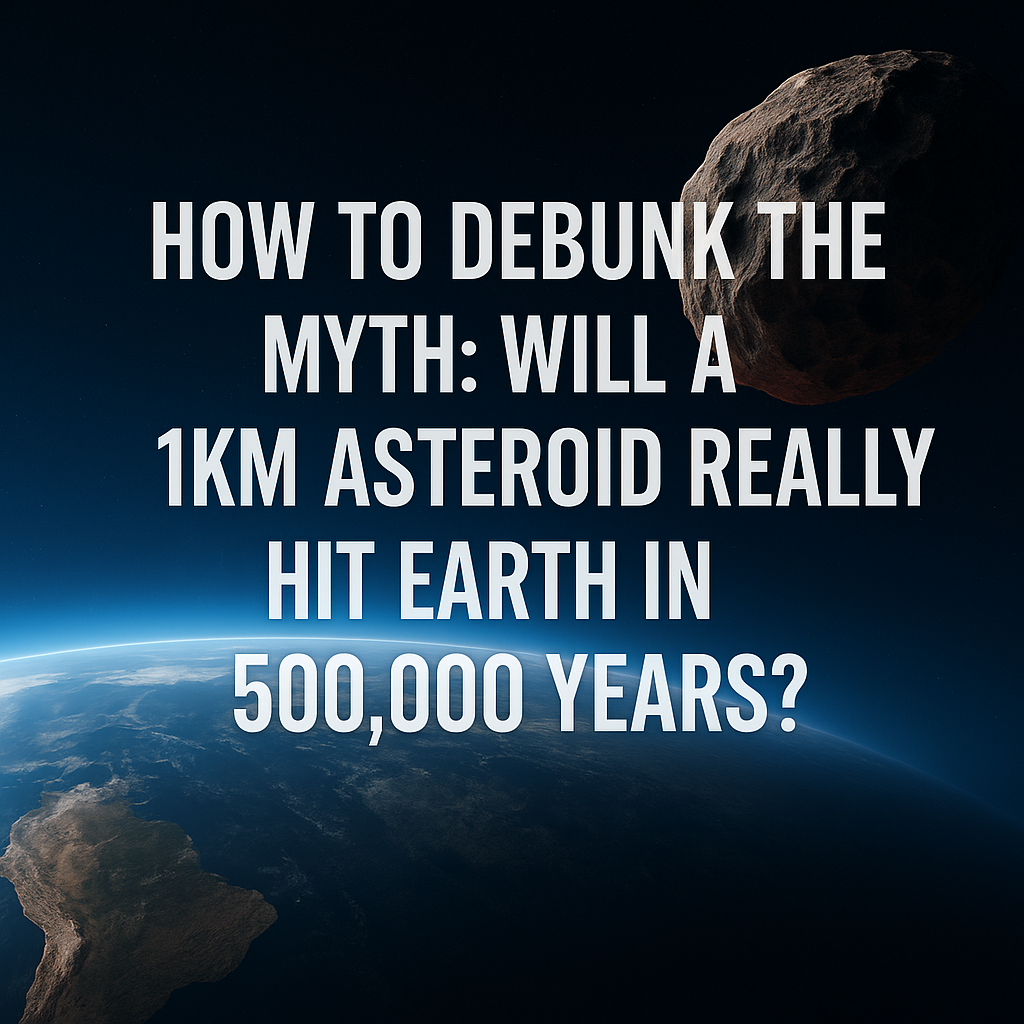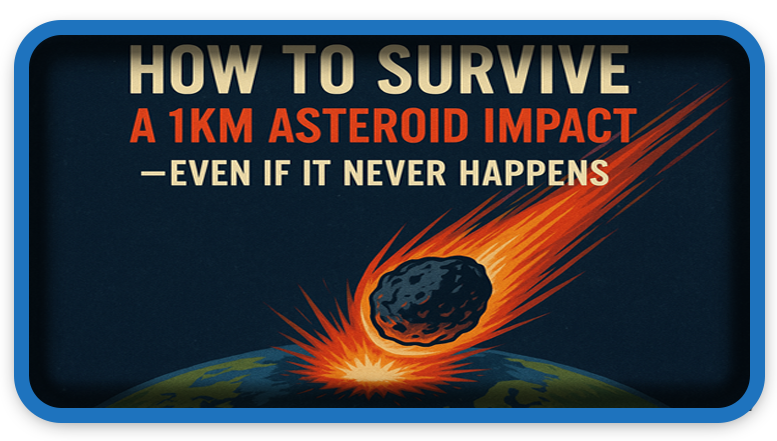⏲️ Estimated reading time: 4 min
🌠 No, We Don’t Know for Sure That a 1 km Asteroid Will Hit Earth in 500,000 Years
Some claim a 1-kilometer asteroid will crash into Earth in 500,000 years. But science doesn’t support this as a certainty. It’s just a theoretical estimate based on impact frequency, not a confirmed prediction backed by observational data.
🔭 What Do Scientists Say?
Over time, astronomers and researchers have studied how often large asteroids collide with Earth. Here’s what the science says:
- According to estimates from NASA, the European Space Agency (ESA), and other scientific bodies, an asteroid about 1 kilometer wide hits Earth on average once every 500,000 to 1 million years.
- This does NOT mean that one will definitely strike in 500,000 years. It’s simply a statistical estimate based on historical data and probability models.
- For example, the Chicxulub impact, which likely led to the extinction of the dinosaurs, was caused by an asteroid estimated to be 10–12 km in diameter but such events are extremely rare.
🛡️ Current Monitoring Efforts
While the threat of a major asteroid impact is real, humanity is not unprepared. We’re actively watching the skies:
- NASA, ESA, and other space agencies work together on programs like NEO Surveyor and the Sentry System to track potential threats.
- These programs monitor tens of thousands of Near-Earth Objects (NEOs) celestial bodies that pass relatively close to Earth.
- So far, no known 1 km asteroid is on a collision course with Earth for the foreseeable future not in the next few decades, or even centuries.
- In 2022, NASA’s DART mission successfully altered the orbit of a small asteroid, proving that it’s possible to change an asteroid’s path.
🌍 What Would Happen if a 1 km Asteroid Hit Earth?
A collision with a 1 km asteroid wouldn’t wipe out humanity, but the regional and global consequences would be serious.
Likely Effects:
- Massive regional destruction: If it hits land, thousands of square kilometers could be devastated.
- Tsunamis: An ocean impact could trigger waves that travel across entire seas and oceans.
- Climate effects: Dust and debris could block sunlight temporarily, causing a short-term cooling period known as an “impact winter”.
- Economic and societal disruption: Depending on the location, it could severely affect transportation, agriculture, communications, and energy systems.
Still, unlike a 10 km asteroid, a 1 km impact would not cause global extinction. It would be a catastrophe, but not the end of civilization.
📊 What Do the Numbers Say?
- The chance of a 1 km asteroid hitting Earth in the next 100 years is estimated to be less than 0.01%.
- Over 90% of the largest NEOs (over 1 km) have already been identified and tracked.
- Advanced radar and telescopes provide regular data to update models and predict orbits decades or centuries in advance.
🧠 Why the Confusion?
Many people misinterpret averages. They assume that because a 1 km asteroid hits Earth on average every 500,000 years, it will definitely happen at that exact time in the future.
This is a logical fallacy. It’s like saying, “It rains once every 10 days, so it will certainly rain on the 10th day.” That’s not how probability works.
This is a statistical frequency, not a set date.
🛰️ Do We Have Solutions?
Yes. Here’s what humanity is developing:
- Space missions to redirect asteroids – like DART, successfully tested in 2022.
- Specialized telescopes and radar systems – for early identification.
- International cooperation – global alert systems and threat mitigation planning.
- Education and simulation programs – preparing civil protection agencies and governments for potential scenarios.

✅ Key Takeaways
- ❌ We have no proof that a 1 km asteroid will hit Earth exactly 500,000 years from now.
- ✅ Statistically, such an event could occur once every few hundred thousand years.
- 🔭 Currently, no known large asteroid poses a threat to Earth.
- 🌌 Humanity has the time and technology to detect and potentially divert these objects.
🔔For more tutorials and science posts like this, consider subscribing to our blog.
📩 Do you have questions or suggestions? Leave a comment or contact us!
🏷️ Tags: asteroids, space impact, NASA, science, solar system, asteroid deflection, planet Earth, cosmic collisions, NEO, astronomy
📢 Hashtags: #asteroid, #impact, #NASA, #science, #space, #NEO, #monitoring, #safety, #cosmos, #education
🔚 Final Thoughts – What Do We Really Know?
We are living in the most advanced era of space exploration. While risks exist, we are not powerless. Instead of fearing the future, let’s prepare wisely and trust the science. Knowledge, cooperation, and innovation are our best defenses against the unknown.
Only logged-in users can submit reports.
Discover more from HelpZone
Subscribe to get the latest posts sent to your email.

